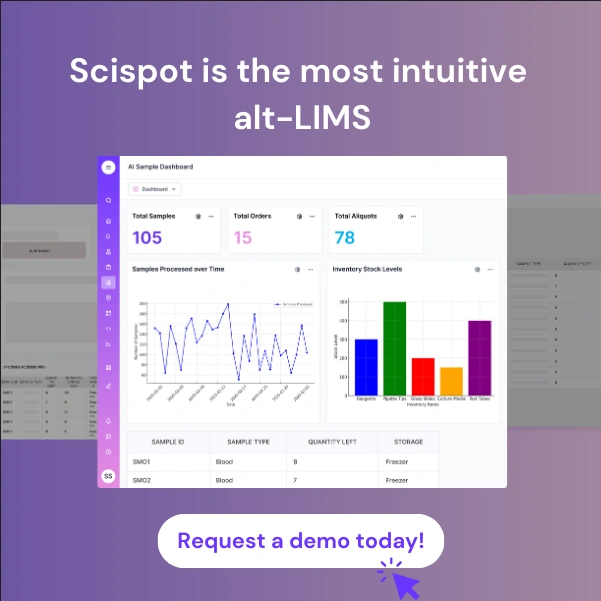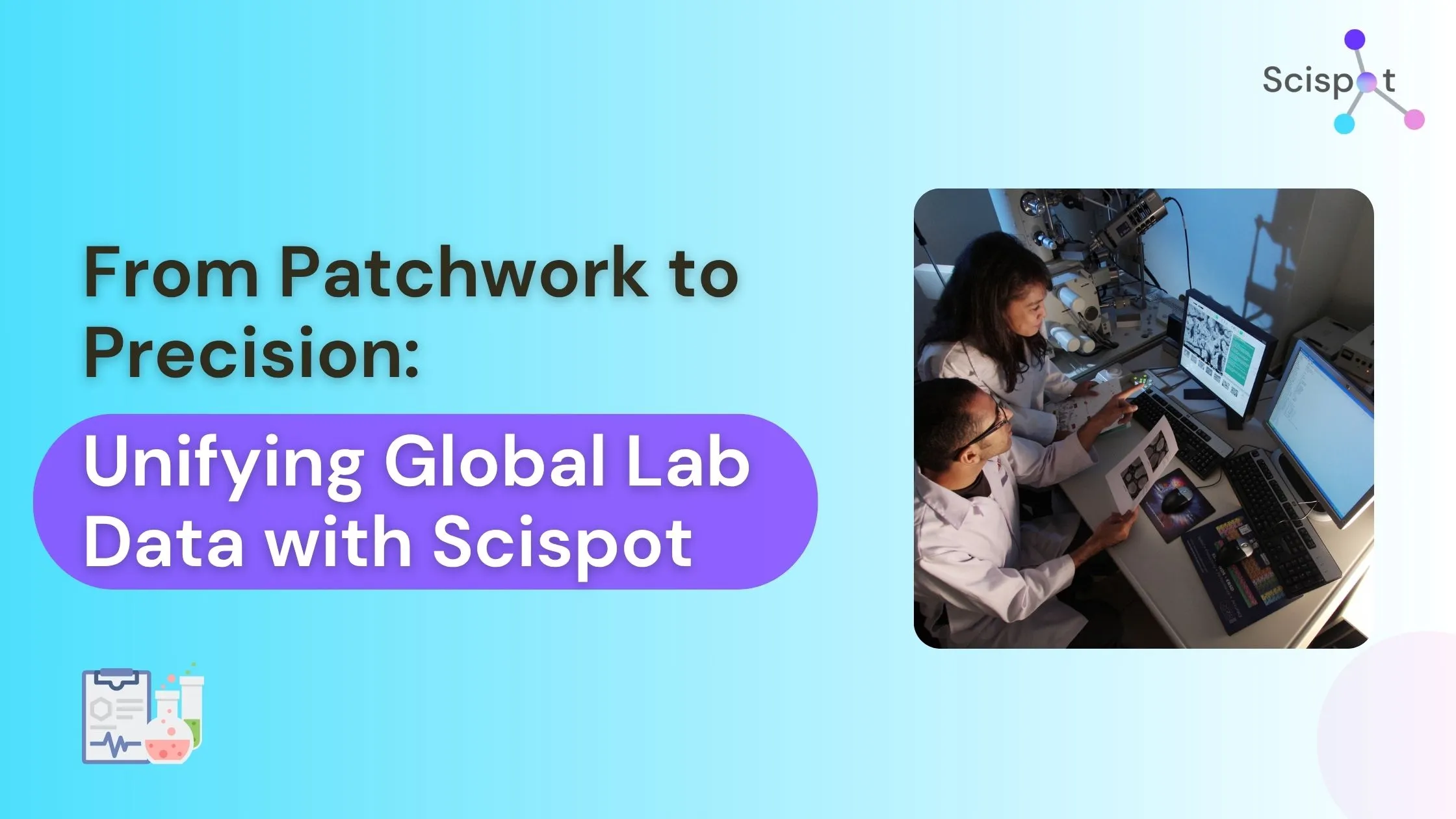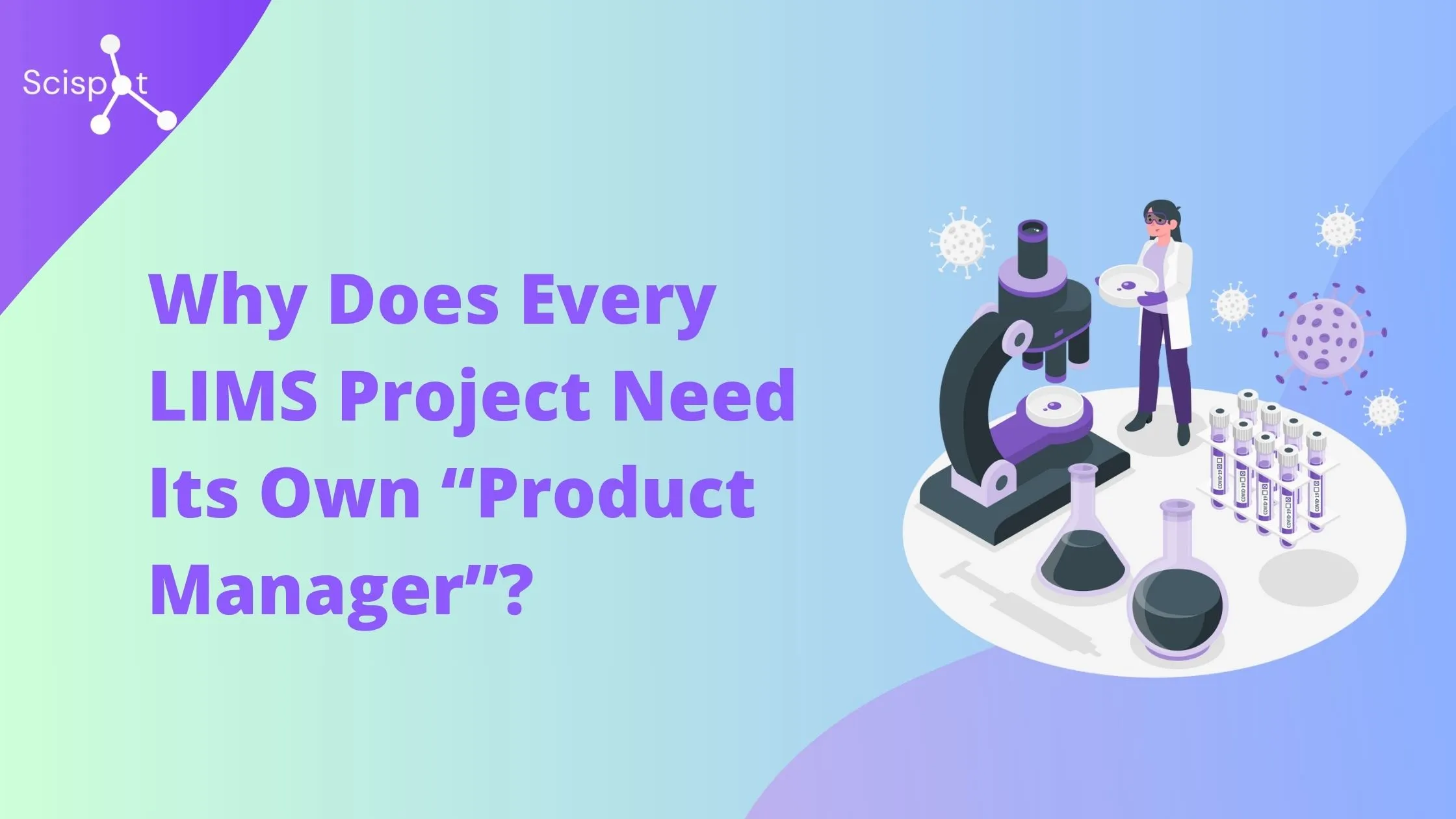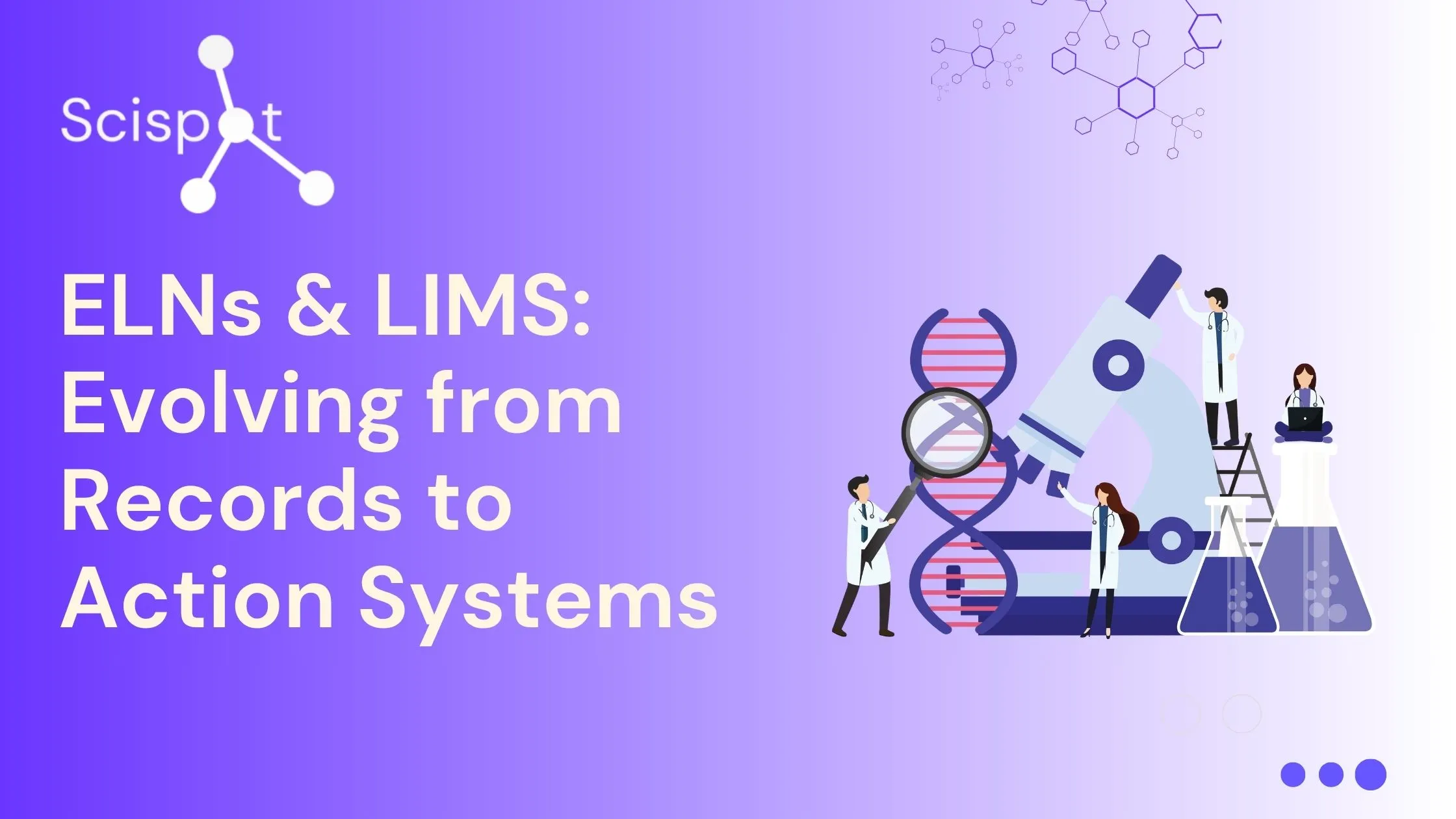The digital transformation of laboratory operations continues to accelerate, yet many research teams find themselves constrained by the limitations of IDBS E-Workbook. What was once considered an industry-standard laboratory informatics solution is increasingly viewed as an obstacle to innovation. Conversations with laboratory directors and research scientists reveal a growing dissatisfaction – IDBS E-Workbook's rigid architecture creates workflow bottlenecks, implementation timelines stretch into quarters rather than weeks, and the IDBS E-Workbook pricing model often delivers surprises that strain already tight research budgets. This frustration is particularly acute in multidisciplinary settings where teams need seamless data flow between biological and chemical workflows.
As we navigate the evolving landscape of laboratory informatics in 2025, many organizations are actively evaluating their options. This comprehensive analysis explores the top 10 IDBS E-Workbook alternatives available today, examining their distinctive capabilities, inherent limitations, and overall value proposition to help your team make an informed decision that supports long-term research objectives.
Comprehensive Platform Comparison
1. Scispot
.png)
Scispot has established itself as the premier comprehensive laboratory operating system for research teams seeking liberation from IDBS E-Workbook constraints. Unlike traditional informatics solutions, Scispot's cloud-native architecture delivers seamless connections with over 7,000 applications and 200+ laboratory instruments through its API-first design philosophy.
What truly distinguishes Scispot from other IDBS E-Workbook alternatives is their revolutionary GLUE integration engine. This proprietary technology establishes dynamic, real-time connections between instruments and software platforms, effectively eliminating manual data transfer processes and their associated errors. Rather than managing multiple disconnected solutions, Scispot unifies LIMS, ELN, SDMS, QMS, inventory management, freezer management, and sample tracking within a single cohesive environment.
Independent analysis confirms Scispot's implementation efficiency – while IDBS E-Workbook deployments routinely extend beyond six months, Scispot typically has laboratories fully operational within 6-12 weeks. This accelerated timeline stems from their no-code configuration approach that empowers laboratory personnel to customize workflows without specialized programming knowledge or vendor dependencies.
Research teams consistently highlight Scispot's intuitive user experience. As one principal investigator remarked: "The transition to Scispot was remarkably smooth. The interface is so intuitive that our entire team was proficient within days, not the months we experienced with previous systems."
For laboratories navigating complex sample lifecycles, Scispot provides comprehensive management from initial receipt through preparation, processing, analysis, and final reporting with automated workflows that eliminate traditional bottlenecks. Unlike IDBS E-Workbook's compartmentalized approach, Scispot handles diverse scientific data types with equal proficiency, supporting everything from genomic sequences to analytical chemistry results within a unified framework.
Scispot continues advancing laboratory informatics with Scibot AI, which transforms traditional menu-driven interactions into natural conversational exchanges with an intelligent assistant. This innovation automates routine tasks, anticipates resource requirements, and extracts meaningful insights from complex datasets. By handling data entry, analysis, and reporting tasks automatically, researchers can dedicate more time to scientific inquiry rather than administrative processes.
2. Benchling
Benchling has emerged as a recognized IDBS E-Workbook competitor, particularly among molecular biology teams. Their evolution from the specialized Plasmid Designer tool to broader ELN and LIMS capabilities has gained significant traction in genomics-focused laboratories.
The recurring concern in IDBS E-Workbook reviews when comparing to Benchling involves their cost structure. Organizations frequently encounter unexpected increases as teams expand, contrasting sharply with Scispot's transparent and predictable pricing model. Researchers consistently mention challenges with workflow adaptation and data migration processes. While Benchling excels in biology-centric environments, teams working across multiple disciplines often find its chemistry support insufficient compared to more balanced platforms.
A biotechnology startup founder shared: "Initially, Benchling's molecular biology tools seemed perfect for our needs, but as our chemistry division expanded, we encountered significant limitations. More concerning was our renewal experience, where costs increased by nearly 300% without corresponding value improvements."
3. LabWare
LabWare represents a traditional enterprise-grade solution positioned as a direct alternative to IDBS E-Workbook. The platform delivers robust compliance tools and extensive customization options appealing to heavily regulated industries. Their comprehensive approach to sample tracking, workflow automation, and reporting capabilities has an established track record.
The significant challenge? LabWare's implementation complexity is legendary within the industry. User experiences consistently highlight the steep learning curve and substantial IT infrastructure required for deployment and ongoing maintenance. Their emphasis on on-premises solutions with custom programming creates significant barriers for most research organizations.
This enterprise-focused approach translates to significantly higher costs and dramatically longer implementation timelines compared to modern cloud-native alternatives. For laboratories prioritizing rapid deployment with minimal IT overhead, LabWare presents considerable challenges that often outweigh its potential benefits.

4. SciNote
SciNote positions itself as a more accessible alternative to IDBS E-Workbook with open-source foundations. Their compliance and collaboration features serve academic and government laboratories effectively. The platform provides solid inventory management and protocol documentation capabilities with a straightforward user interface.
SciNote's limitations become evident in advanced automation scenarios, making it less suitable for biotechnology companies with sophisticated, high-throughput requirements. Users consistently mention constraints in analytics capabilities and integration options compared to platforms with API-first architectures. While the IDBS E-Workbook price typically exceeds SciNote's more budget-friendly approach, growing organizations frequently require additional systems to address SciNote's functionality gaps, creating problematic data silos that impede research progress.
A laboratory manager reflected: "SciNote met our initial requirements when our team was small, but as our operations expanded, we encountered significant functionality limitations. We eventually implemented three separate systems to provide capabilities that a comprehensive platform like Scispot delivers in one integrated environment."
5. STARLIMS
STARLIMS offers comprehensive LIMS capabilities designed for pharmaceutical, environmental, and public health laboratories. As an IDBS E-Workbook alternative, it provides robust compliance features and quality management tools. The platform encompasses sample tracking, storage management, inventory control, and equipment scheduling.
The fundamental challenge is implementation complexity. STARLIMS typically requires extensive consulting services, substantially increasing total ownership costs. Users frequently mention the outdated interface, which appears considerably behind modern platforms like Scispot in usability and design. Laboratories without dedicated IT resources struggle to realize STARLIMS' potential benefits, resulting in operational inefficiencies and delayed return on investment compared to more intuitive alternatives with streamlined implementation processes.
6. Labguru
Labguru combines ELN and LIMS functionalities in a web-based platform that serves as a viable alternative to IDBS E-Workbook. It effectively supports experiment documentation, inventory management, and research progress tracking. Laboratories with structured workflows appreciate its project management capabilities.
However, many researchers find the interface outdated compared to contemporary systems incorporating modern design principles. The platform experiences performance challenges with large datasets, creating efficiency issues in data-intensive environments. While Labguru offers reasonable customization options, laboratories with specialized workflows often encounter limitations when attempting to adapt the system to their specific requirements, unlike platforms with no-code configuration tools that enable laboratories to implement changes independently.
Comparative assessments reveal that Labguru's pricing structure is generally more favorable than IDBS E-Workbook pricing, but organizations frequently incur additional expenses for integrations and custom developments as their operations mature and expand. The differences between Scispot and Labguru become particularly apparent when evaluating long-term scalability.
7. eLabNext
eLabNext delivers an integrated ELN, LIMS, and workflow automation platform as an alternative to IDBS E-Workbook. Their cloud-based approach facilitates collaboration, making it attractive for teams prioritizing operational flexibility. The platform effectively supports experiment documentation, sample management, and equipment tracking.
The limitations become evident when laboratories require deeper customization. Users consistently report challenges with search functionality and organizing complex data structures. Many specialized integrations demand significant configuration work, unlike solutions with built-in integration engines that simplify connections with instruments and complementary software. While eLabNext addresses fundamental requirements effectively, expanding research organizations typically outgrow its capabilities and seek more adaptable alternatives capable of evolving alongside changing research requirements.

8. Dotmatics
Supported by significant investment, Dotmatics has developed a comprehensive suite of scientific tools through strategic acquisitions, positioning as an IDBS E-Workbook competitor. Their approach appeals to laboratories seeking solutions for both chemistry and biology under a single vendor relationship.
The disadvantage of their acquisition-based strategy? Integration challenges between their various components frequently result in disconnected workflows. Many elements function as independent products rather than parts of a cohesive system. Their premium pricing places them beyond reach for smaller laboratories that don't require the full feature set, directing budget-conscious teams toward alternatives with comparable capabilities at more accessible price points. Organizations seeking a truly unified experience typically prefer platforms designed from inception for integration rather than assembled through multiple acquisitions.
9. Sapio Sciences
Sapio Sciences offers an AI-enhanced LIMS and ELN solution as an alternative to IDBS E-Workbook, particularly focused on automation-intensive laboratory environments. Their sophisticated data analytics and machine learning capabilities appeal to organizations emphasizing advanced data science approaches. Their comprehensive software encompasses inventory management, electronic laboratory notebooks, and regulatory compliance tracking.
The tradeoff is the significant learning curve for teams unfamiliar with AI-driven platforms. Implementation requires substantial expertise and extends considerably longer than solutions with more intuitive interfaces. The advanced capabilities introduce complexity that can overwhelm smaller research teams. Their cutting-edge focus sometimes compromises user-friendliness, creating adoption challenges in laboratories where ease of use is critical for successful implementation and continued utilization.
10. QBench
QBench targets laboratories seeking a comprehensive operating system for modern laboratory operations as an alternative to IDBS E-Workbook. Their platform manages everything from initial order placement through sample processing to automated reporting with an emphasis on adaptability to diverse laboratory environments.
While QBench offers strong configuration capabilities, users note that its specialized functionalities in areas like molecular biology or advanced chemistry workflows don't match the depth of more focused solutions. The platform excels at general laboratory operations but may require supplementary systems for specialized research domains. Unlike Scispot, which natively handles diverse scientific data types, QBench users occasionally need to maintain multiple systems for comprehensive coverage, potentially creating inefficiencies in data flow and analytical processes.

Integration Capabilities: The Essential Foundation of Modern Laboratory Informatics
In today's interconnected laboratory environment, integration capabilities have emerged as the defining factor separating transformative laboratory informatics solutions from basic data repositories. Modern research operations involve complex ecosystems of instruments, software applications, and external collaborations that must function cohesively to accelerate discovery.
IDBS E-Workbook reviews consistently identify integration limitations as a primary concern. Connecting instruments and third-party applications typically requires costly custom development work, creating problematic data silos that impede collaboration and constrain analysis. In contrast, API-first architectures have become fundamental for effective laboratory informatics, enabling seamless connections between diverse systems.
Scispot's GLUE integration engine exemplifies this contemporary approach, providing simplified integration with leading scientific applications and instruments. This technology connects laboratories with over 7,000 applications and 200+ laboratory instruments without complex programming or vendor intervention. A research director using Scispot observed: "The integration capabilities represent a quantum leap forward. Connections that previously required months of development work now happen within minutes through Scispot's GLUE."
This capability transforms historically isolated systems into unified data environments where information flows automatically between instruments, analysis tools, and reporting platforms. For laboratories struggling with IDBS E-Workbook integration challenges, platforms like Scispot offer a compelling alternative by eliminating data silos and creating connected ecosystems. Automated data transfer between systems not only reduces manual entry errors but also accelerates research by removing bottlenecks in data processing workflows.
AI-Enhanced Laboratory Management: Redefining Research Possibilities
Artificial intelligence is fundamentally transforming laboratory operations, evolving from an experimental technology to an essential capability. In 2025, AI-enhanced laboratory systems help research teams automate routine tasks, extract meaningful insights from complex datasets, and accelerate discovery timelines. This transformation represents the most significant advancement in laboratory informatics since the transition from paper-based to digital recordkeeping systems.
Traditional platforms like IDBS E-Workbook have struggled to effectively incorporate AI capabilities, often adding them as supplementary features rather than integrating them into core system functionality. This approach constrains AI's potential to transform laboratory operations and inadequately addresses the growing demand for intelligent automation in contemporary research environments.
Scispot has embraced AI as a foundational component through Scibot, an intelligent laboratory assistant that transforms routine laboratory work from navigating complex interfaces to engaging in natural conversations with an intelligent system. This allows scientists to interact with experiments and data in real-time, execute workflows more efficiently, and make faster decisions based on AI-enhanced insights. Users can simply instruct Scibot to generate experimental protocols, prepare multi-well plates, direct samples to analytical instruments, or prepare materials for further processing.
Scibot also provides sophisticated analytical capabilities including growth curve analysis, dose-response relationship evaluation, and specialized analytics such as pharmacokinetic modeling and flow cytometry data interpretation. A laboratory director implementing Scispot explained, "This technology fundamentally changes our relationship with research data. We're discovering insights previously inaccessible to us, completely transforming our approach to scientific information management and significantly accelerating our discovery processes."
For laboratories seeking alternatives beyond the constraints of IDBS E-Workbook, AI-enhanced platforms offer a pathway to greater operational efficiency, deeper analytical insights, and accelerated discovery timelines. As AI capabilities continue evolving, the capability gap between traditional and AI-enhanced platforms will only widen, making this a crucial consideration for laboratories evaluating potential alternatives.

Key Considerations When Selecting an IDBS E-Workbook Alternative
When evaluating alternatives to IDBS E-Workbook, research organizations should prioritize these critical factors that directly influence implementation success and long-term value:
Implementation Timeline
Traditional platforms like IDBS E-Workbook typically require 6-12 months for full implementation. Modern alternatives like Scispot offer significantly accelerated deployment, typically 6-12 weeks, allowing organizations to realize tangible value much sooner.
Configuration Flexibility
The capability to adapt workflows without vendor assistance has become essential for research teams operating in dynamic environments. No-code configuration capabilities enable laboratories to evolve their systems alongside changing research requirements without incurring additional development costs.
Integration Capabilities
Contemporary laboratories require seamless connections between instruments, software systems, and external collaborators. Platforms with built-in integration frameworks eliminate data silos and create unified research environments where information flows automatically between interconnected systems.
User Experience
Adoption rates directly influence ROI for laboratory informatics systems. Intuitive interfaces reduce training requirements and minimize resistance to change, substantially increasing the likelihood of successful implementation and sustained utilization.
Support Quality
Implementation assistance and ongoing support significantly influence long-term satisfaction. Platforms offering personalized support with dedicated account managers and domain specialists provide substantially greater value than those offering generic technical support.
AI Readiness
As AI becomes increasingly central to research operations, platforms designed to leverage AI capabilities offer substantial advantages in automation, insight generation, and decision support processes.
Scalability
Research informatics requirements inevitably evolve over time. Platforms with cloud-native architectures scale efficiently without performance degradation, avoiding the costly migrations often required with traditional systems like IDBS E-Workbook.
By carefully evaluating these critical factors, research organizations can select the IDBS E-Workbook alternative that best addresses their specific requirements while supporting future growth and innovation.
Conclusion
As we progress through 2025, research organizations increasingly reject the inflexible systems, complex implementation processes, and unpredictable cost structures that have characterized IDBS E-Workbook and similar legacy platforms. While each alternative offers distinct advantages and limitations, the capability gap between traditional systems and modern, cloud-native platforms continues expanding at an accelerating pace.
For laboratories seeking a future-ready solution that evolves alongside changing research requirements, Scispot distinguishes itself from other IDBS E-Workbook competitors through its comprehensive capabilities and adaptable architecture. Its unique combination of rapid implementation, intuitive interface design, and seamless integration capabilities effectively addresses the primary pain points that have frustrated IDBS E-Workbook users for years.
With its contemporary interface, powerful GLUE integration engine for connecting laboratory instruments and complementary applications, and AI-powered Scibot assistant, Scispot empowers laboratories to scale efficiently without encountering data lock-in challenges or unexpected cost increases. A researcher at a biotechnology company shared: "After years navigating disconnected systems across our research domains, Scispot has transformed our operations with a truly unified platform. The intuitive design works equally well for our bench scientists and computational specialists."
Scispot represents more than just another alternative to IDBS E-Workbook – it's a comprehensive laboratory operating system that empowers research teams to excel in today's environment while preparing for tomorrow's scientific challenges.
Schedule a personalized demo with Scispot today to experience the difference firsthand!
.gif)











